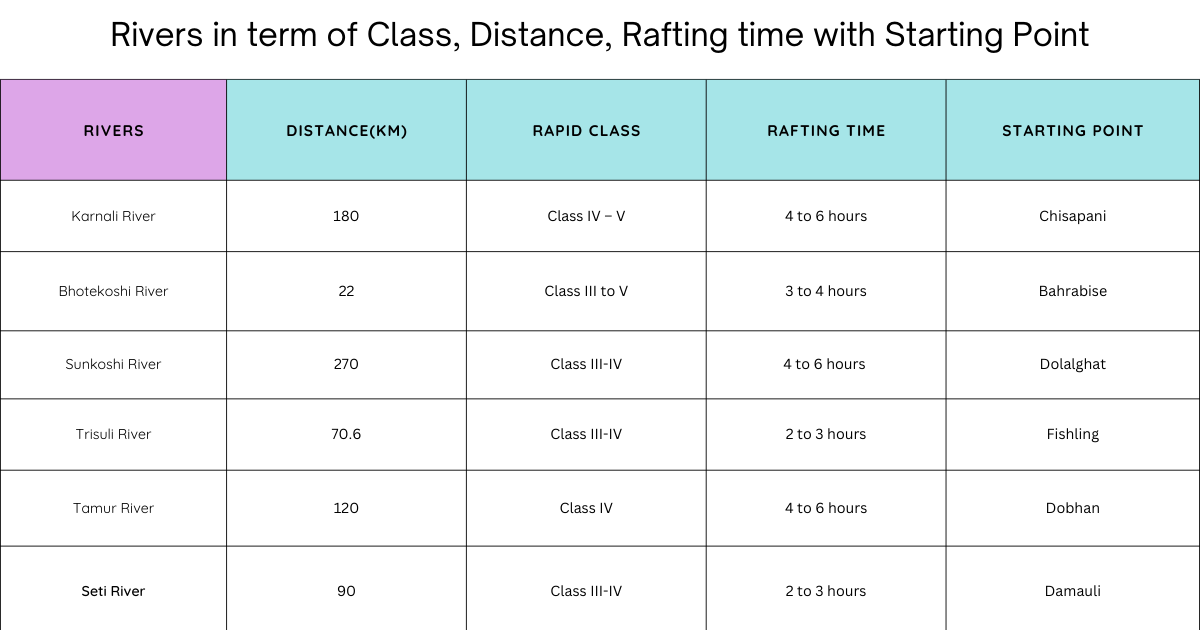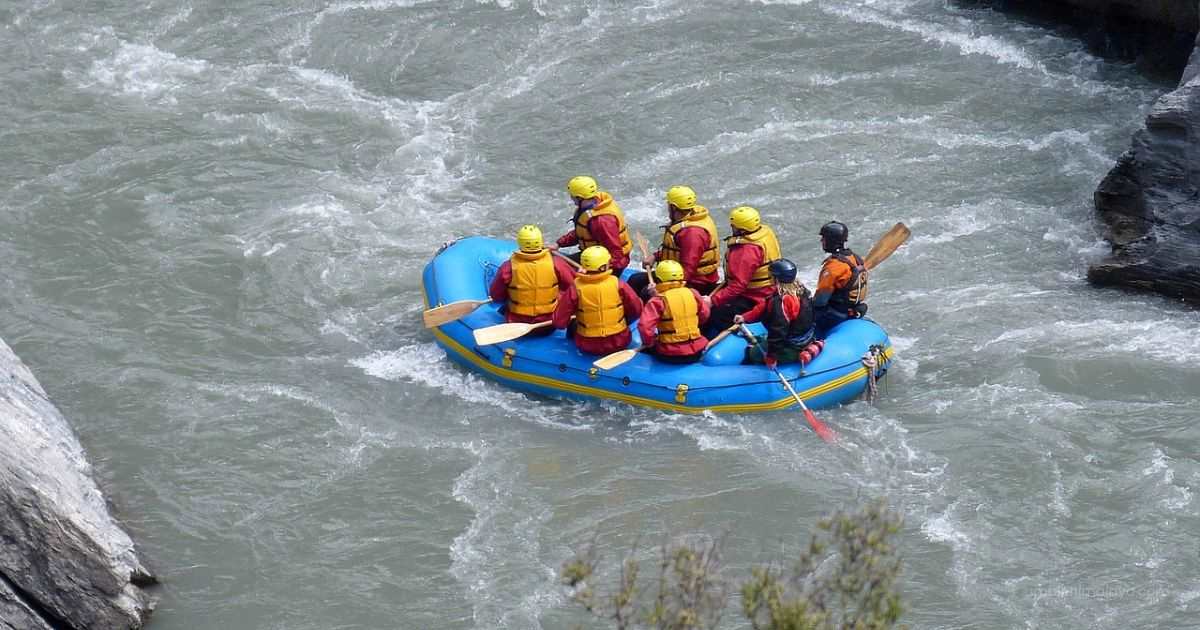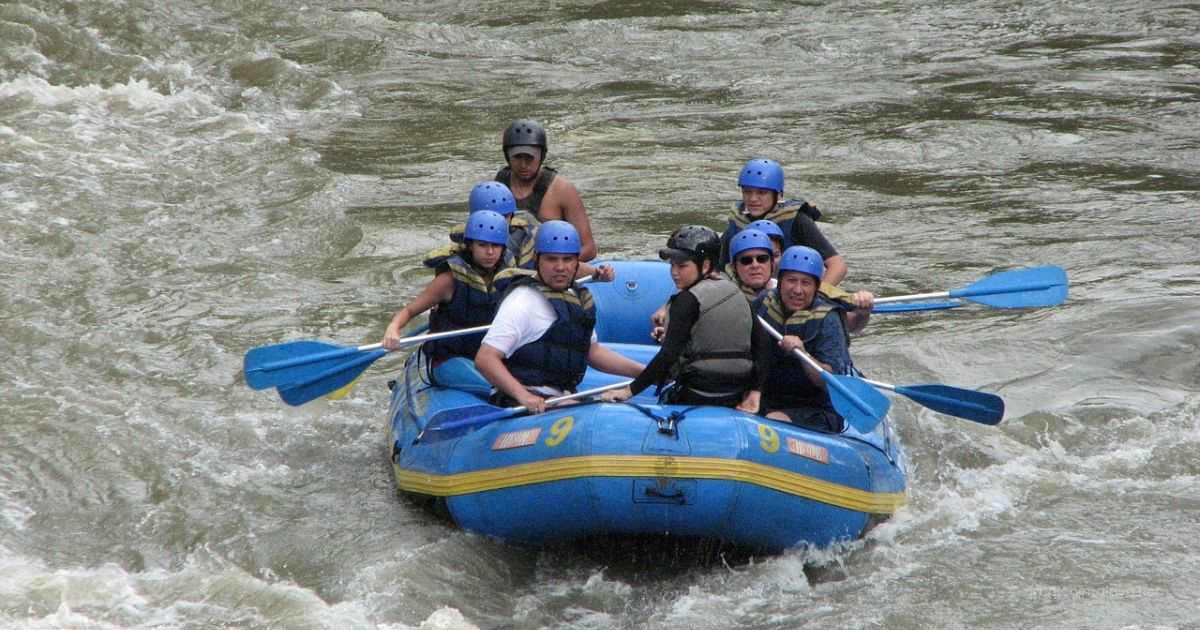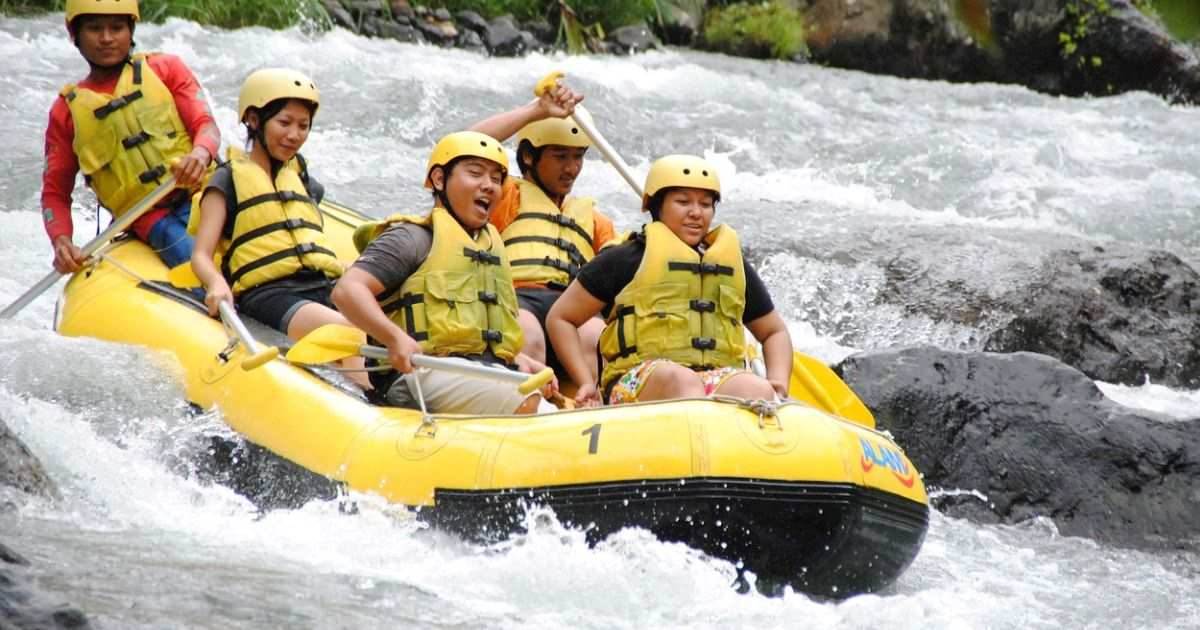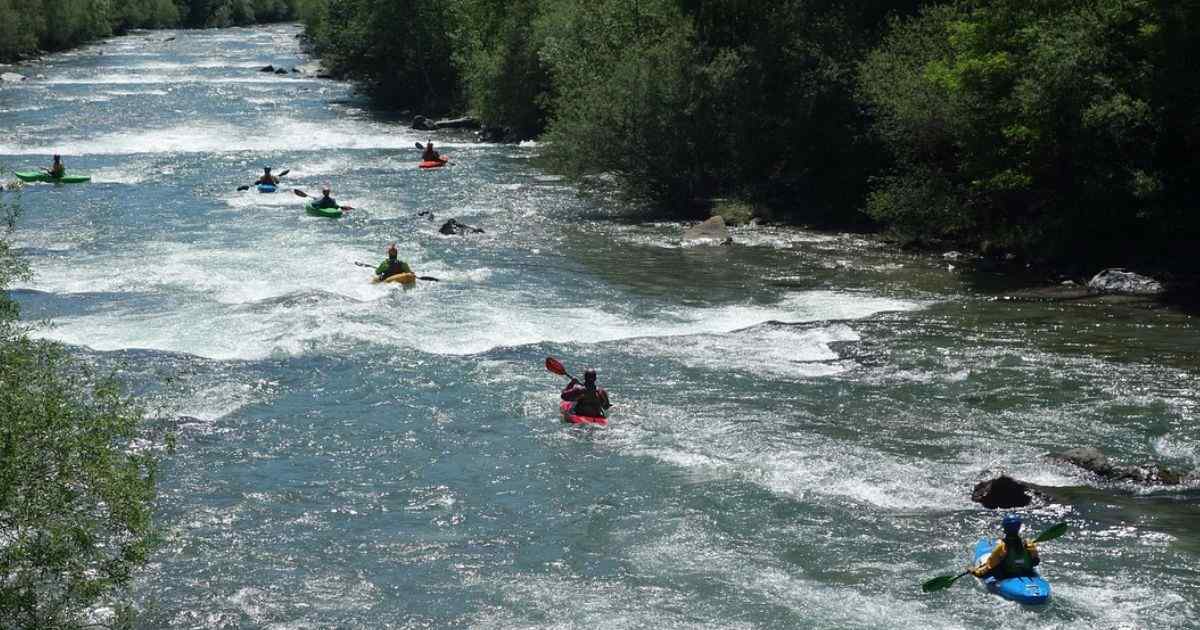Rafting in Nepal: Overview
Nepal is the richest country in rivers, with over 6000 rivers flowing through the Himalayas. It is a haven for adventure seekers with incredible rivers and exciting rapids. Rivers flow through the beautiful landscapes, stunning scenery, terraced fields, and charming villages, attracting people to Rafting in Nepal. In Nepal, there are three types of rivers in terms of origins. Rivers that are fed by glaciers and snow-fed lakes, Monsoon-fed Rivers and Spring-fed Rivers.
Trishuli, Bhote Koshi, and Marsyangdi are rivers that flow by melting glaciers in the high Himalayas. These rivers give a relatively consistent water level, providing a reliable flow for rafting.
The Sunkoshi and Tamur rivers are Monsoon-fed rivers that primarily rely on monsoon rains for their water supply. Heavy rainfall occurs during the (June to September) monsoon season, which increases water volume, making these rivers more powerful and challenging for rafting.
Water sourced from natural springs and groundwater are the Spring-fed Rivers. Compared with other types of rivers, these rivers maintain a more consistent flow throughout the year. The Seti and Kali Gandaki rivers are the best examples of it.
Allow Rivers to Do Rafting in Nepal
Many rivers provide the opportunity for a rating in Nepal with adventurers to experience the thrill and beauty of rafting in this stunning Himalayas. But, due to the construction of dams and weirs for hydropower production, some rivers are unsuitable for rafting in Nepal. Here are some rivers classified in terms of distance, difficulty, and suitability with the rating regarding people’s experience. Classification of rivers is also called the International Scale of River Difficulty.
Most of these rivers are Glacier-fed rivers that flow by melting glaciers in the high Himalayas. These rivers give a relatively consistent water level, providing a reliable flow for rafting.
Best Rivers for Rafting
Nepal offers you various rivers with unique characteristics and appeal. Evaluating the best rafting river depends on the people’s experience, skill level, and desired experience. However, here are some rivers that are widely regarded as the best for rafting in Nepal:
BhoteKoshi River
Rafting in the Bhotekoshi River is a most demanding adventure due to the white water with a high flow, which passes through the breathtaking scenery through narrow gorges, remote valleys, and lush landscapes compared to others. Bhotekoshi River is about 67.6 km northeast of Kathmandu, which is easily accessible for rafters. The rafting journey starts from Kathmandu. Before the journey, we will be guided by experienced rafters and river guides. Depending on your package, the rafting trip can last a few hours to days. Bhotekoshi River Rafting is considered as a challenging trip, so be physically and mentally prepared with swimming skills.
Karnali River
Karnali River Rafting is also one of the popular adventures in Nepal. Karnali River is one of the largest and longest rivers, flowing from Mt Kailash(Abode of Lord Shiva)Tibetan plateau to the western region of Nepal. Karnali Rivers offers you a very unique and off-the-beaten-path adventure with a mix of thrilling rapids, calm sections, and opportunities for wildlife spotting. Usually, the trip begins by taking a flight from Kathmandu to Nepalgunj. When you start your trip to Karnali, you will spend several days exploring different parts of the river, depending on your package. When exploring different parts of the river, Gangetic dolphins, marsh mugger crocodiles, and various species of birds will be spotted.
Sunkoshi River
Sunkoshi River (river of Gold) is one of the longest rivers that flow through a wonderful landscape, a remote village with thrilling rapids. The journey began from Kathmandu to Dolaghat, the rafting adventure’s starting point. While rafting, you will be passing through trailing rapids like “Meat Grinder,” “High Anxiety,” “Hakapur,” and many more. On the way, you can camp on sandy riverbanks and enjoy delicious meals. For Sunkoshi river rafting, you should have moderate physical fitness and swimming skills. Choosing the best rafting company for Sunkoshi river rafting is very important. Amble Himalaya has the capacity to make this trip memorable as well as safe.
Trishuli River
Trishuli River Rafting is also one of the best destinations, and the easy accessibility trip from Kathmandu makes it more popular among beginner and experienced rafters. Trishuli River offers a mix of exciting rapids and wonderful landscapes with a 20km journey. Rafting will start with providing proper safety measures information. After this, the trip will begin through navigating exciting rapids such as Teddys Nose, Ladies Delight, and Upset. Besides this, when you paddle down the river, you will pass through the scenic beauty of the surrounding landscapes, terraced fields, and lush forests.
Best Seasons for Rafting
Nepal’s best rafting seasons depend on personal preference, water level, and river condition. Generally, rafters prefer pre-monsoon (spring) and post-monsoon (autumn) periods for rafting. These seasons offer favorable weather conditions, moderate water levels, and optimal river conditions for rafting adventures. It is important to note the weather while rafting in Nepal. So, be aware of that and consult with your rafting company about it. Amble Himalaya will provide you with more information about it.
Rafting Cost in Nepal
The cost of rafting is highly dependent on many factors, including the duration of the trip, the grade of the river, and the rafting company you choose. The price of the rafting is separated in terms of Nationality. For Nepali citizens, the price gets very low compared to other citizens. The minimum and maximum price for rafting is about $30-$900. Price is directly dependent on the itinerary that you choose.
Safety Measures in Rafting
It is our duty to make your trip safe and memorable. River rafting will be very safe if you follow a couple of safety rules that are mentioned below:
- Choose a certified and skilled rafting guide.
- Make sure you wear a personal flotation device (PFD) and a life jacket.
- Make your safety and comfort by wearing the necessary protective gear.
- Confirm you are adequately equipped with suitable outerwear for the day’s activities.
- Keep good grip and technique while holding the paddle
- Make sure that you stay inside the boat at all duration.
- Educate yourself with the proper swimming techniques.
- Educate yourself with the orders, including “High-Siding.”
- Always maintain calm and avoid panicking in any condition.
- Pay careful watch to your guide during the safety conversation and while on the water.
Conclusion
As an exclusive rafting company in Nepal, Amble Himalaya offers adventure seekers the thrill and beauty of rafting in the magnificent Himalayas. Rivers flowing through stunning landscapes provide exhilarating journeys on rivers.
So, pack your backpack, & set off on a thrilling adventure.



